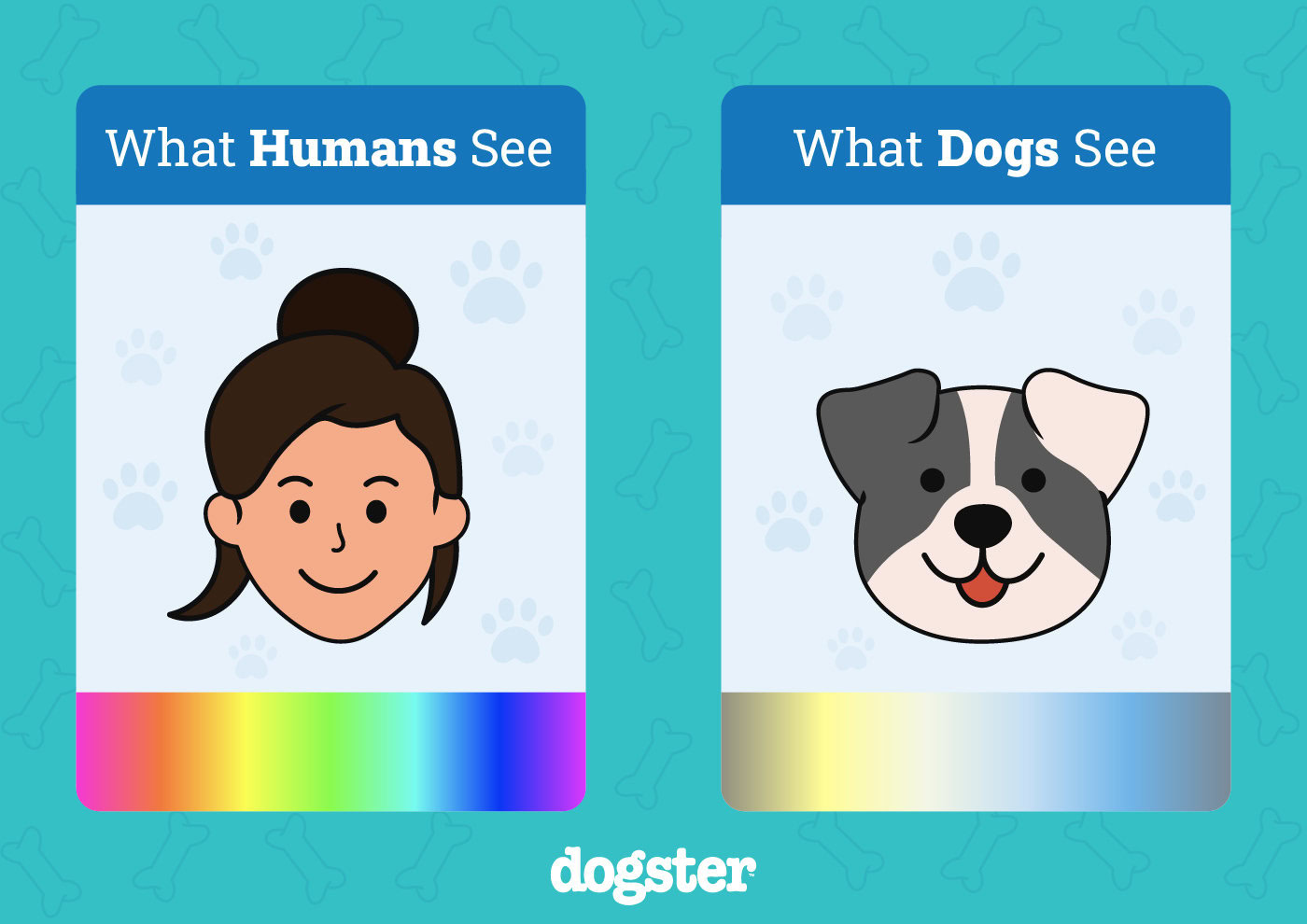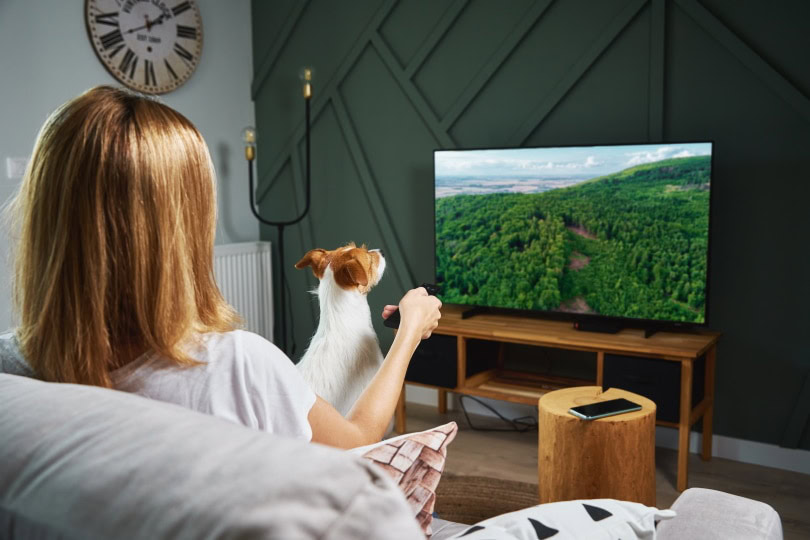VET APPROVED

The information is current and up-to-date in accordance with the latest veterinarian research.
Learn more »Click to Skip Ahead
Considering how closely intertwined dogs are with humans, and how much time we spend with them, there have been and are still a lot of myths surrounding them. In particular, there are some misconceptions about their sight and how they see the world around them.
Dogs have excellent vision in dim light thanks to their eye anatomy. They possess a reflective layer called the tapetum lucidum, which enhances their ability to see in low-light conditions. Additionally, the distribution of their photoreceptors allows dogs to see much better at night than humans. However, dogs still require some ambient light to stimulate their retinal cells, meaning they cannot see in total darkness.
They also have superior peripheral vision, with a typical field of view of about 240 degrees, compared to the narrower range of human vision. Contrary to common myths, dogs do not see in black and white. While their color perception is more limited than that of humans, they can still distinguish certain colors, though not with the same vibrancy or detail.

Dog Night Vision
There are two types of photoreceptors, or light-sensitive cells in the retina, rods and cones. Rods are the ones responsible for dim-light vision, while cones are responsible for color vision. The retina of the dogs has more rods in comparison to humans, which pick up light and enable them to see better in the dark. This enables them to hunt at dawn and dusk when their prey would either be getting ready to sleep or just waking up, making them more susceptible prey. However, they do need some light to be able to see, so dogs are unable to see in total darkness.
It is also worth noting that dogs do not solely rely on their eyesight. They have other senses highly developed, which they use over eyesight. Your dog can definitely find its way around a dark room much better than you can because, apart from having better dim-light eyesight, they are using their hearing and smell to assist them.

Peripheral Vision
As well as being able to see better than humans in low-light conditions, dogs can also see movement better than us and they have a wider field of view. Humans’ field of view is approximately 180 degrees, although at the very edge of our view, things become heavily distorted. Dogs have a field of view of 240 degrees, so they have a much better chance of seeing movement to the side and even slightly behind them.
Are Dogs Color Blind?
Humans do have an advantage over dogs when it comes to seeing colors and differentiating shades of the same color, although dogs do not see in black and white, which is a myth that still abounds even today.
Dogs have dichromatic vision. This means that they are able to see in shades of blue and yellow. Where we see red, for example, dogs see more of a yellow color. Their ability to see yellow more clearly than other colors may be one of the reasons that dogs love tennis balls so much.

Are Dogs Near-Sighted?
Dogs rely on their sense of smell and hearing before they rely on their sense of sight. Their noses and ears are far more sensitive than ours, which means they can pick up noise and scents from a very long distance. When hunting, they would use these senses to get them close to their prey before then combining them with their sense of sight to help hone in on their quarry. As such, dogs do not see that well over long distances.
As opposed to humans, who have 20/20 vision, dogs have approximately 20/75 vision. This means that we can see clearly at 75 feet, a dog would need to be 20 feet away to see that object clearly. Items further away appear blurry and difficult to differentiate for dogs.
Can Dogs See What’s On TV?
Another myth surrounding dogs and their vision that was prevalent for a long time was that dogs couldn’t see images projected on TV. The proliferation of videos on social media showing dogs chasing animals and balls on screen obviously disproves this myth, but there may be some degree of truth to it.
Dogs have a much higher flicker fusion rate than humans, meaning they require a higher frame rate to perceive projected images as a continuous image. They can only clearly see movement on a screen when the display refreshes at around 70 frames per second or more. A lot of modern TVs have a refresh rate, which is the number of frames displayed per second, of 60Hz, so dogs may perceive those images as flickering rather than smooth.


Final Thoughts
Dogs have an incredible sense of smell and hearing, which are more powerful than their vision. However, this doesn’t mean that their eyesight is poor. In fact, dogs’ eyes are well adapted for seeing in low-light conditions. While they may struggle with distant objects and have a limited color range compared to humans, they excel at detecting small movements and have a wider field of peripheral vision. Essentially, their vision is perfectly suited to their needs as a species.
- Related Read: Should Puppies Sleep in the Dark? Facts & FAQ
Featured Image Credit: Ksenia Raykova, Shutterstock











